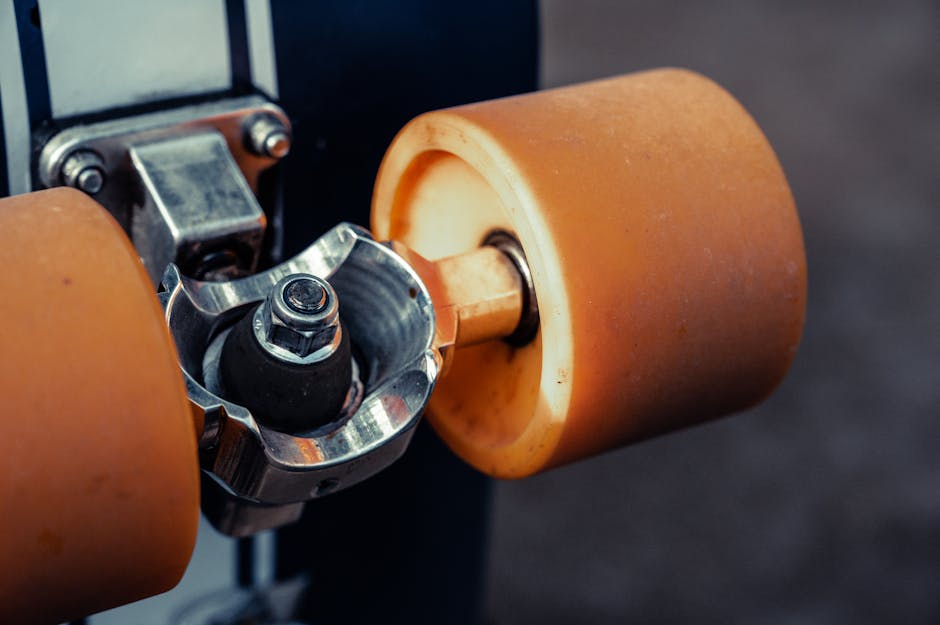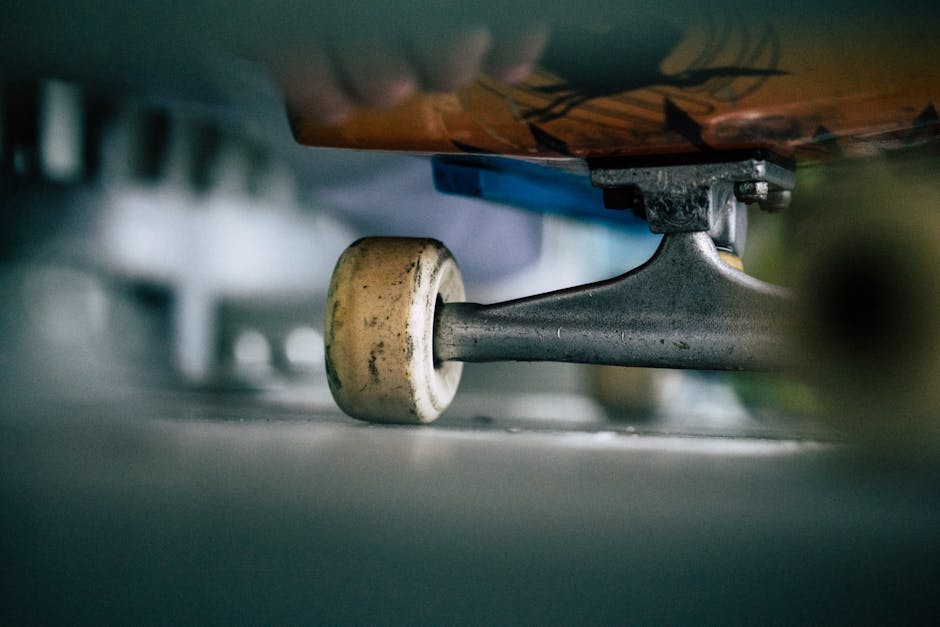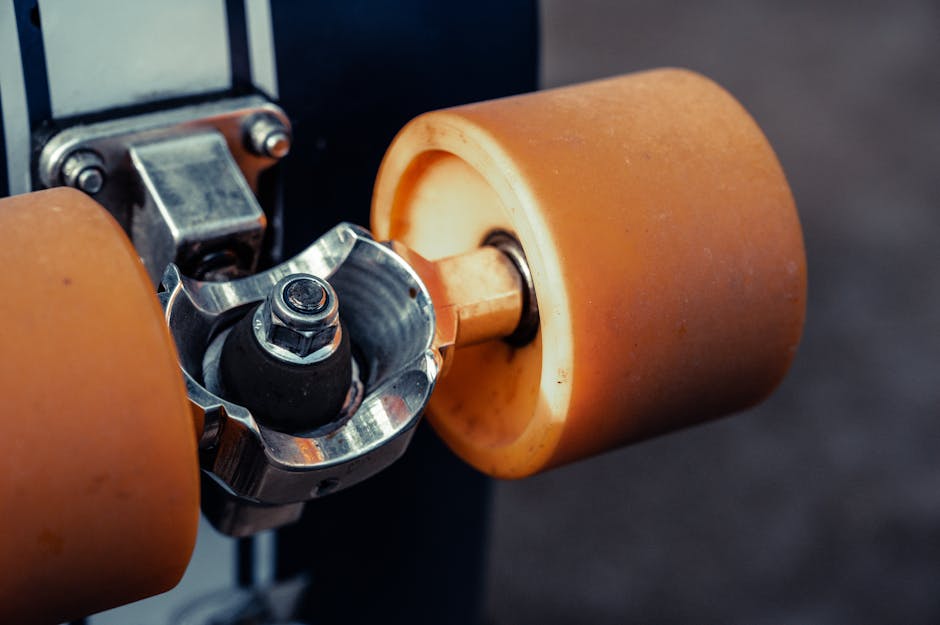Electric skateboards offer an exhilarating blend of technology and adventure, bringing a new dimension to personal transportation and outdoor exploration. The choice of wheel size and hardness is much more than a simple preference—it shapes the very essence of the riding experience. This comprehensive guide aims to shed light on these crucial factors, empowering riders with the knowledge to make choices that align with their lifestyle and riding conditions. From smooth city streets to challenging off-road tracks, understanding the impact of wheel size and hardness is essential for every electric skateboard enthusiast.
Understanding Wheel Size Variations
Electric Skateboard Wheel Sizes: A Comparative Guide
Electric skateboards come in various shapes and sizes, tailored to different riding experiences and environments. One of the critical factors influencing these experiences is the size of the skateboard wheels. Ranging from smaller wheels designed for smooth surfaces to larger ones built for rugged terrains, the diameter of these wheels plays a pivotal role in how the skateboard performs. Here’s a detailed comparison of different electric skateboard wheel sizes to help riders make an informed decision.
Small Wheels (70-90mm)
Small wheels are typically seen on electric skateboards designed for city commuting and street skating. These wheels offer a closer connection to the ground, providing stability and ease of control at lower speeds. They excel on smooth, paved surfaces, where their tighter grip aids in precise maneuvering around obstacles and in traffic. However, small wheels have their limitations. They struggle on rough terrains and are more susceptible to getting caught in cracks and potholes, which can lead to a bumpy ride and increased wear.
Medium Wheels (90-110mm)
Medium-sized wheels strike a balance between stability and versatility. They are adaptable to a variety of surfaces, offering a smoother ride on slightly rough or uneven roads compared to their smaller counterparts. These wheels maintain a good grip while also allowing for higher speeds, making them ideal for riders who navigate both city streets and park paths. While they can handle moderate imperfections in the riding surface, extremely rugged terrains might still pose a challenge.
Large Wheels (110mm and above)
Large wheels are designed for adventure, capable of taking on off-road conditions and rough terrains with ease. Their significant diameter allows them to roll over obstacles and cracks effortlessly, providing a comfortable ride regardless of the surface quality. Electric skateboards with large wheels are perfect for riders seeking to explore beyond the limits of urban environments. They offer enhanced stability at high speeds and in challenging conditions, but their size can make them slightly harder to maneuver in tight spaces at lower speeds.
Conclusion
Choosing the right wheel size for your electric skateboard largely depends on where and how you plan to ride. Small wheels are best suited for urban commuters who stick to smooth surfaces, while large wheels are ideal for those looking to venture off the beaten path. Medium wheels offer a versatile option for riders who enjoy a bit of both worlds. Ultimately, understanding the trade-offs between different wheel sizes will help riders tailor their electric skateboarding experience to their preferences and the terrains they wish to conquer.

Impact of Wheel Size on Performance
When it comes to enhancing your electric skateboarding experience, understanding the impact of wheel hardness alongside size is essential. Wheel hardness, measured on the durometer scale, plays a pivotal role in determining your ride quality, grip, and ability to handle various terrains. This article delves into how wheel hardness, in conjunction with wheel size, can significantly affect electric skateboard performance.
Electric skateboard wheels are typically made of polyurethane, a material known for its flexibility and resilience. The durometer scale, which ranges from soft (around 78A) to hard (up to 100A), indicates the hardness of these wheels. Softer wheels, being more flexible, can absorb road vibrations and offer a smoother ride, especially on rough surfaces. In contrast, harder wheels, because of their rigidity, provide less vibration absorption but better speed and efficiency on smooth terrains.
Riders aiming for comfort during long rides or those often traversing rough, uneven paths might lean towards softer wheels. These wheels grip the road better, making for a safer and more stable journey. However, it is crucial to remember that softer wheels tend to wear out faster than their harder counterparts, especially when frequently ridden on abrasive surfaces.
Harder wheels, suited for smooth surfaces like skate parks or well-paved roads, excel in delivering speed and minimizing rolling resistance. They are the go-to for riders focused on performance, allowing for quicker acceleration and higher top speeds. Nonetheless, the increased vibration and reduced grip on less-than-ideal surfaces pose challenges, especially for less experienced riders.
The interplay between wheel size and hardness culminates in a tailored riding experience. Large, soft wheels might be the ultimate choice for someone seeking comfort and stability over diverse terrains, whereas a rider prioritizing speed and agility on smooth surfaces might opt for small, hard wheels. Medium wheels offer a balance, but their performance is still largely dictated by hardness levels.
Moreover, the choice of wheel hardness impacts energy consumption. Softer wheels may require more power from the electric skateboard to maintain speeds due to their higher rolling resistance. This consideration is vital for ensuring that your skateboard has the range to support your rides.
In conclusion, while wheel size significantly affects the performance, maneuverability, and terrain suitability of electric skateboards, the impact of wheel hardness cannot be overlooked. By carefully selecting the right combination of wheel size and hardness, riders can customize their skateboarding experience to match their preferred style, comfort level, and terrain requirements. This nuanced approach to customization ensures an optimal balance between performance, efficiency, and personal preference, providing an enriched electric skateboarding experience.

Wheel Size and Battery Life
Understanding the intricacies of electric skateboard wheel size and hardness is paramount for optimizing your riding experience and the longevity of your skateboard’s battery life. Herein lies an exploration that digs deeper into the subtleties of wheel size and hardness, uncovering how these factors intricately influence the energy efficiency and overall battery life of an electric skateboard.
An often-overlooked aspect of electric skateboarding is the undeniable impact that the choice of wheel hardness and size has on energy consumption. Starting with wheel hardness, it’s essential to highlight that while softer wheels excel in providing a comfortable ride over bumpy surfaces, they inherently demand more power from the skateboard’s motor to maintain speeds comparable to harder wheels. This increased power requirement can lead to a quicker depletion of the skateboard’s battery, especially over extended use. Conversely, harder wheels, with their reduced friction and smoother roll on even terrains, tend to be more energy-efficient, thus potentially extending the battery’s life between charges.
However, the relationship between wheel size and energy consumption isn’t as straightforward. Larger wheels, with their increased diameter, can travel farther with each rotation, which might suggest improved energy efficiency. Yet, the larger the wheel, the more effort required from the motor to initiate movement or climb hills due to the higher rolling resistance and the increased moment of inertia. Therefore, while larger wheels might offer advantages in terms of speed and the ability to overcome obstacles, they can also place a greater strain on the battery.
Medium-sized wheels strike a balance, offering a middle ground between the benefits and drawbacks inherent to small and large wheels. They represent a compromise, providing enough ease in maneuverability without excessively taxing the skateboard’s battery life. This balance is crucial for riders looking for versatility in their electric skateboarding experience.
To maximize an electric skateboard’s battery life while catering to individual riding preferences and requirements, it’s crucial to consider both wheel size and hardness. Opting for harder wheels could be beneficial for those who primarily skate on smooth, even surfaces, as they reduce energy consumption and enhance battery life. On the other hand, softer wheels might be preferable for riders facing rougher terrains, despite the trade-off in increased power usage and reduced battery efficiency.
Inevitably, the choice boils down to a rider’s specific needs and the environment in which the skateboard will be used most frequently. Riders should weigh the pros and cons of various wheel configurations, considering factors like terrain, personal comfort, desired speed, and the importance of battery life in their electric skateboarding experience.
In conclusion, achieving the optimal balance between wheel size and hardness is a nuanced, yet critical, aspect of electric skateboarding that significantly impacts energy consumption and battery life. By making informed decisions about these factors, riders can not only enhance their riding experience but also ensure that they are getting the most out of their electric skateboard’s battery life. Understanding and applying this knowledge empowers riders to tailor their electric skateboarding experience effectively, ensuring a thrilling ride that doesn’t prematurely end because of a drained battery.

Choosing the Right Wheel Size
Choosing the right wheel size and hardness for your electric skateboard isn’t just about aesthetics or a smooth ride; it’s a critical decision that significantly impacts the skateboard’s energy consumption and, consequently, its battery life. This relationship between wheel characteristics and the skateboard’s energy demands is a nuanced aspect that every rider must navigate to optimize their skateboarding experience.
Softer wheels, while providing a comfortable and vibration-free ride on uneven or rough surfaces, come with a notable downside: increased power requirements. The main reason behind this is the additional grip and friction they present. More grip means your electric skateboard’s motor has to work harder, thus drawing more power from the battery to maintain the same speed, compared to harder wheels on smooth surfaces. This increased energy demand can lead to a shorter battery life per charge, limiting the distance you can travel without needing a recharge.
On the flip side, harder wheels are celebrated for their energy efficiency, especially when rolling on smooth terrains. Their reduced grip and lower friction mean that the motors require less effort and thus consume less energy to propel or maintain speed. For riders who prioritize long rides or have limited charging opportunities, opting for harder wheels could indeed be the more practical choice. However, this advantage comes at the cost of ride comfort, particularly on less forgiving surfaces where every bump and crack could be felt more intensely.
The size of the wheel also plays a pivotal role in how energy is consumed by your electric skateboard. Larger wheels might offer a smoother ride over rough terrains and provide higher speeds, but they also require more torque to accelerate to the same speed as smaller wheels. This can lead to a higher initial drain on the battery. Meanwhile, medium-sized wheels strike a balance, offering a middle ground between energy consumption and ride comfort, making them a versatile option for varied terrains and riding preferences.
In making an informed decision about wheel size and hardness, riders should consider their primary riding terrain, speed needs, and how often they’re able to charge their skateboards. For instance, those frequently navigating rough terrains might prioritize comfort and opt for larger, softer wheels, accepting the trade-off of increased energy consumption for a smoother ride. Conversely, riders mainly cruising on smooth paths and looking to maximize battery life might lean towards smaller, harder wheels to enhance their energy efficiency.
Ultimately, the art of optimizing wheel configuration for energy conservation and extended battery life is a balance. Riders must weigh their personal preferences against the physical demands placed on their electric skateboards by different wheel types. By considering how each aspect of wheel size and hardness can impact their riding experience, skateboarders can make educated choices that align with their style, ensuring a fulfilling and efficient ride every time.

Selecting the right wheel size and hardness for an electric skateboard is a pivotal decision that goes beyond basic ride characteristics—it’s about enhancing every aspect of the skateboarding experience. It requires a careful balance of factors, considering not just the terrain but also personal riding preferences and the quest for energy efficiency. By making informed choices, riders equip themselves for maximum enjoyment and performance, ensuring every ride is not just a means of transportation, but a fulfilling adventure on wheels. Tailoring your skateboard to fit your needs transforms every journey into a seamless blend of efficiency, comfort, and thrill, making every moment on your board truly count.

